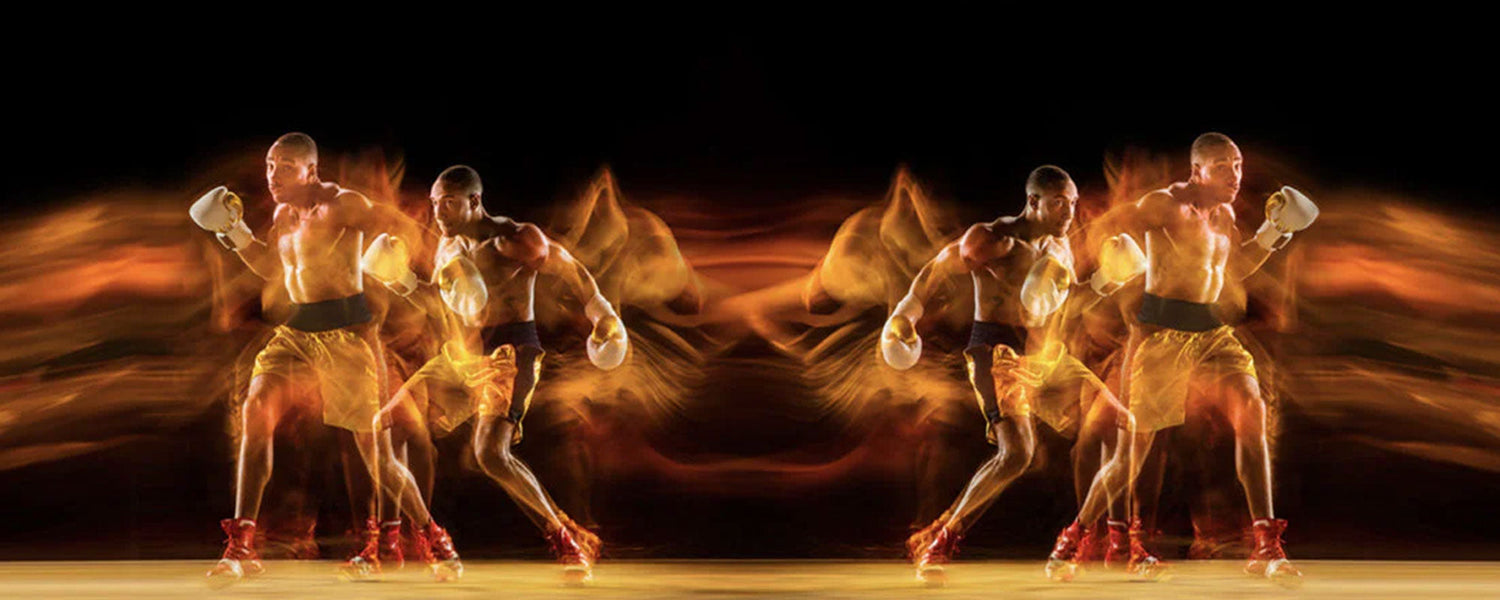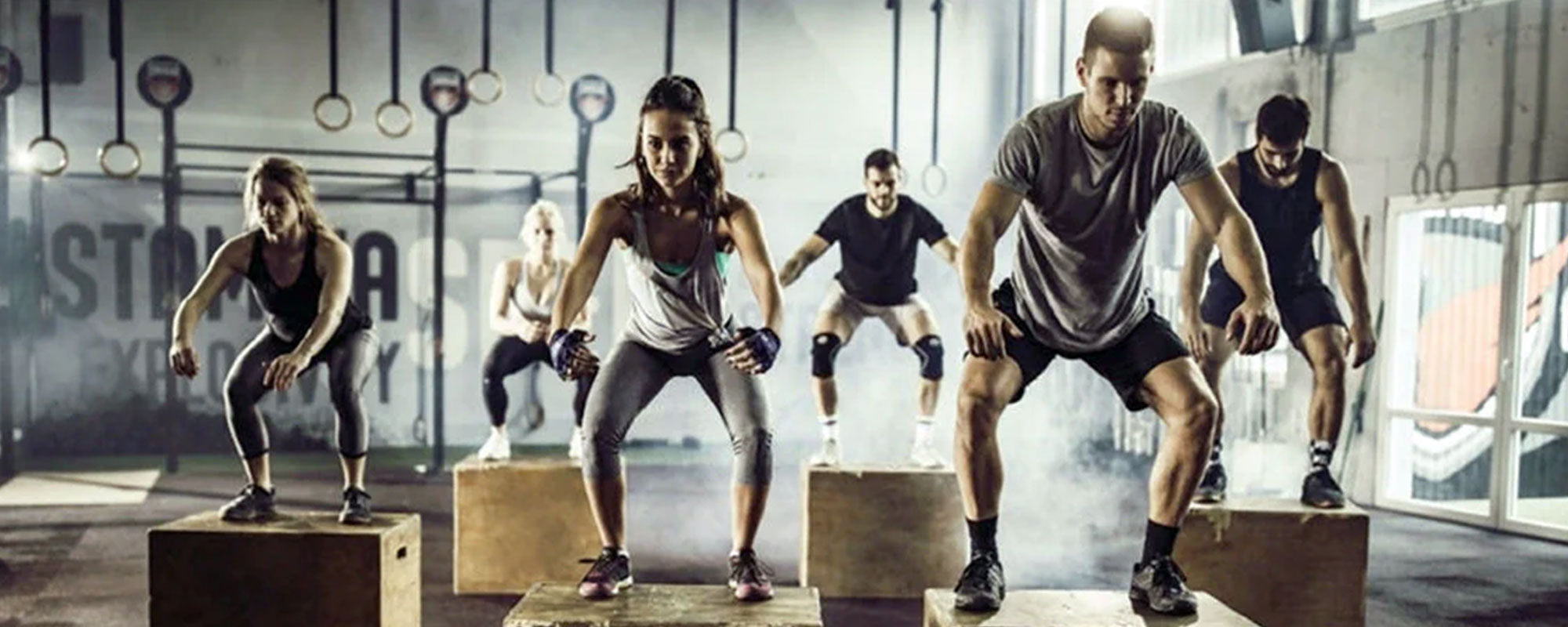Table of content
When watching a boxing battle, it's comparatively easier to keep track of the flurry of fists, fast head, and shoulder movement as combatants throw and block hits. The majority of the action appears to take place above the waist, but the reality is that the boxer's legs are always moving, fuelling each movement.
Boxers must not skip leg day since punching power is produced from the ground up. In the ring, a combatant rarely stands still. Constantly attacking and defending necessitates a lot of activity, so legs don't get much rest until the round is finished. While upper-body strength is crucial, the legs are where the majority of punching power is generated.
Also read: Boxing 101: Best Punches Workout
From the ground up, a boxer's leg develops force, which is then transferred to the core, shoulders, arms, and fists. Experienced boxers utilize their legs to drive 38.6 percent of the force in their blows, according to a 2013 study published in the journal of strength and conditioning research. Beginners use only 16.5 percent of the power provided by their legs, whereas intermediate boxers employ 32.2 percent. It's clear that achieving the highest level of completeness necessitates superior leg strength and power.
Weight classes are vital in competitive boxing, but not so much in fitness, self-defense, or technical boxing. Heavy lifting isn't always the most effective way to build muscle for boxing, but it can help with functional strength and injury prevention.
Leg strength and speed can be improved in a variety of ways. It is critical to maintaining a sense of equilibrium. These are a few things to think about adding to your boxing technique and conditioning routine.
Also read: What is the Correct Way to Do Calf Raises?
1. How do Boxers Strengthen Their Legs?
One important aspect of unilateral workouts is to execute the same number of reps and sets on both legs. Start each set with the weaker leg to increase the severity of the lift. Squats are the king of workouts for most athletes, but lunges, split squats, and step-ups are vastly superior lifts for fighters.
2. Do b Legs Help in a Fight?
Successful fighters devote a lot of time and effort to improving their leg muscles. b legs improve numerous crucial areas of a boxer's offensive and defense, in addition to increasing punching power.
3. Do Boxers Need b Legs?
Leg strength is essential in boxing for punching power and ring movement. As a result, their legs hardly ever get a rest. According to a 2014 study published in the annals of sports science, while upper body muscles are vital, they don't create as much force for a punch.
4. Exercises to Strengthen Your Legs for Boxing
4.1. Deadlifts
There's no need to torture yourself in order to develop massive, heavy leg muscles that will slow you down. Deadlifts are beneficial because they strengthen and extend your hamstrings while also protecting the muscles around your knee. This may reduce the possibility of knee injuries such as joint tears.
Also read: Surprising Benefits of Boxing for Women
How to Do it:
- Lift yourself using your glutes and hamstrings rather than your back.
- Maintain a hip-width distance between your feet.
- Maintain a neutral spine and neck. Look up at a mirror or in front of you.
- Keep the barbell in the middle of your feet at all times.
- Keep your shoulder blades in front of the barbell.
- As you lean down, push your butt back.
- You don't have to get into a deep squat. Maintain a healthy distance between your hips and knees.
4.2. Squats
Squats can be done with or without weights. Again, lifting a heavyweight is not necessarily the most productive option. Squats can also be done in a boxing combat stance, though switching positions evenly is recommended. It's fine to flare the back knee out a little and keep the back heel off the ground as if dodging a punch if squats are unpleasant due to current knee issues.
How to Do it:
- Stand with your feet slightly wider than hip-width and your toes looking front.
- Bend your knees and ankles and gently open your knees to drive your hips back.
- With your heels and toes on the ground, your chest up, and your shoulders back, sit in a squat.
- Aim to get to parallel bent your knees at a 90-degree angle.
- By pressing into your heels and straightening your legs, you can return to a standing erect position.
Also read: Ultimate Guide to Boxing Punch Number System
4.3. Jump Rope
A boxer’s movement is continual. Jump rope is often associated with speed and agility, and this is right. But jumping rope also helps to strengthen calf muscles and build leg endurance for boxing. A boxer should never walk around the ring on his heels because jumping rope forces weight onto the front of the foot.
How to Do it:
- When jumping, keep your feet close together.
- Land lightly by jumping on the midsoles of your feet.
- Maintain a low jumping height.
- Always keep your knees slightly bent.
- Keep your spine tall and neutral.
- Keep your head up, chest up, and forward-facing.
- Pull your shoulders back and hold your elbows down and back.
- Keep your hands parallel to your body's midline.
- Turn the rope with your wrists (not your elbows or shoulders).
4.4. Plyometrics
Plyometrics, also known as plyos, are exercises that require muscles to produce maximal effort for brief periods of time in order to increase power. Some examples include squat jumps, skier lunges, or single-leg hops.
How to Do Squt Jumps:
- Begin with a typical squat, focus your core, and jump up explosively with your feet shoulder-width apart.
- After landing, lower your body back into the squat posture to complete one rep. Make sure you land with your full foot on the ground. Land as quietly as possible, which necessitates control.
5. Takeaway
Certainly, boxers must incorporate lower body exercises in their boxing workout routine to strengthen their legs. Although boxing is fundamentally based on punches and upper body actions that’s what is all related to the offense. What a boxer needs are to develop boxing defense techniques like bobbing and weaving. Although these techniques are also based on upper body movements, they need the collaboration of the lower body as well.
Building lower body strength provides strength to the boxers to keep standing until the last round without getting exhausted. Along with building lower body strength for boxing, a boxer must build core strength. Though, both of these are the fundamentals that empower your punches and make your hits hard.









Leave a comment
This site is protected by hCaptcha and the hCaptcha Privacy Policy and Terms of Service apply.